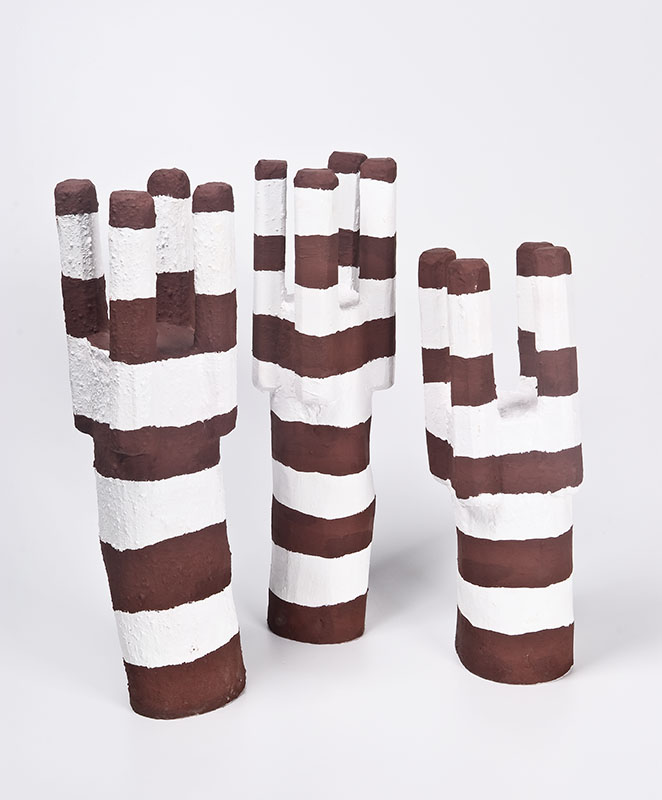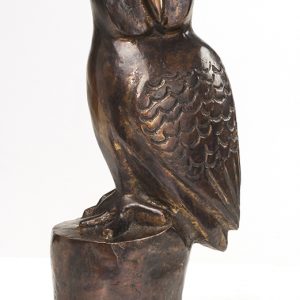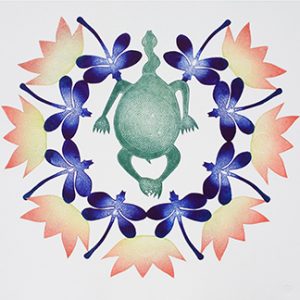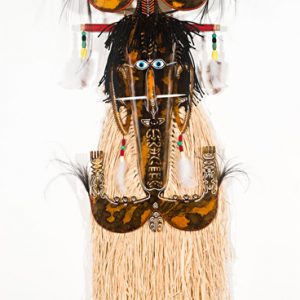Description
From a traditional point of view, law poles were produced for ceremony and left behind to the elements in the tropical rainforest. These sculptures often represented characters that featured in the Dreaming stories belonging to the community and the maker of the poles (12)
The Thapa yongk law poles were produced by the Aurukun community and were used for special occasions. These milkwood sculptures represent inverted trees; the branches and leaves are hidden under the earth, while the roots stick out of the ground. The Thapa yongk enable the spirit to return to the earth. The hidden tree branches symbolize the many Dreaming stories and laws that connect people to the land and to each other. Usually these law poles can be seen only by men, but the artist, Joe Ngallametta gave his personal permission to display the poles in a public context.
The Thuuth thaa’munth (meaning literally ‘blunt-ended fan palm’) law poles, produced by Ron Yunkaporta of the Apelech community, were used in old times in funerary ceremonies. Nowadays they are used in house opening ceremonies, in which the spirit of the deceased person is guided back to his place of birth. The production of these carvings is of great ceremonial significance. The wood originates from the wild kapok tree and the ochre pigments are delved from the earth and subsequently dried andcooked to make the colours more vivid. Ibis feathers and string complete the poles. The motif of the Apelech community consists of white dots on a red background. While this red background represents the reflection of the setting sun on the water, red ochre also bears a connotation to the blood and thus to a vital life force. The white dots represent the gleam of the salt water on the shores.
Georges Petitjean, Before Time Today. Reinventing Tradition in Aurukun Aboriginal Art, University of Queensland Press





